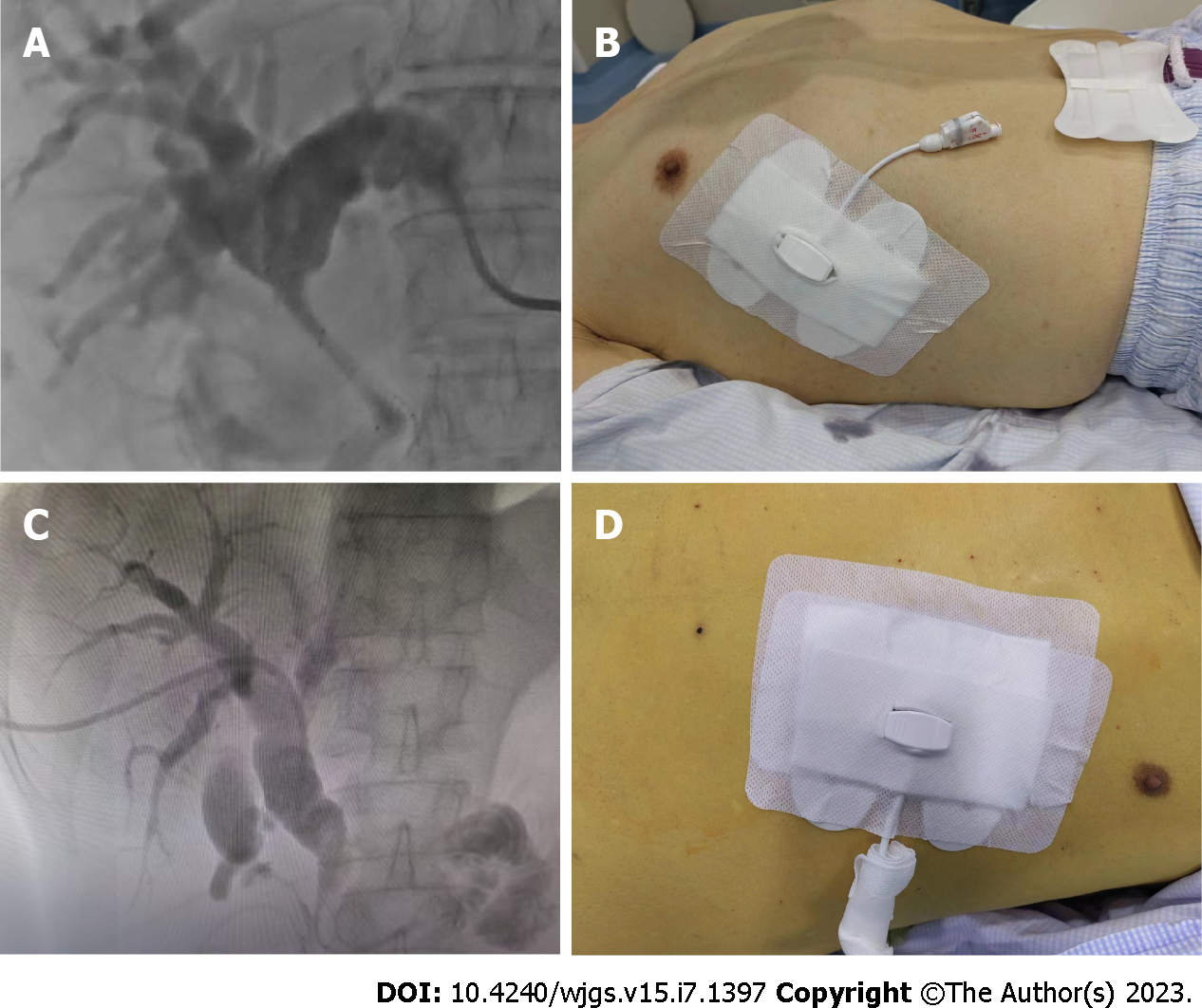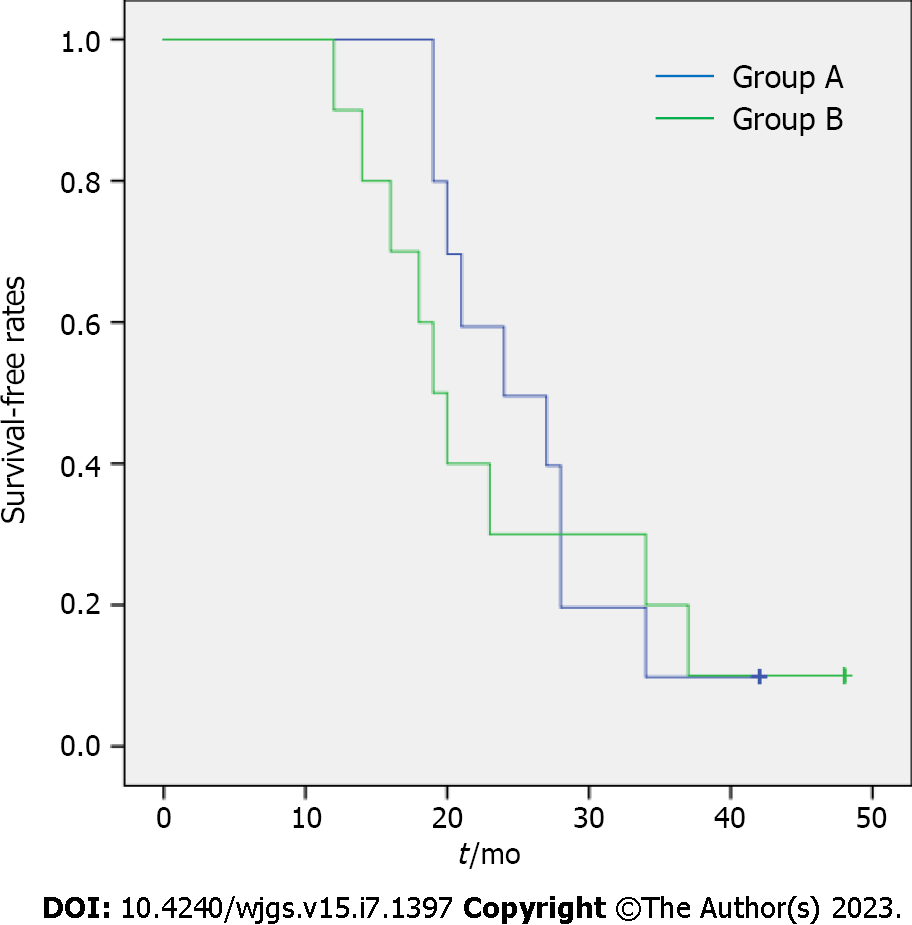Copyright
©The Author(s) 2023.
World J Gastrointest Surg. Jul 27, 2023; 15(7): 1397-1404
Published online Jul 27, 2023. doi: 10.4240/wjgs.v15.i7.1397
Published online Jul 27, 2023. doi: 10.4240/wjgs.v15.i7.1397
Figure 1 Images of cholangiography and fixation of skin drainage tube.
A and B: Cholangiography and fixation of skin drainage tube after subxiphoid percutaneous puncture biliary stent placement and drainage of the left liver; C and D: Fixation of skin drainage tube in cholangiography after percutaneous puncture biliary stent placement and catheter drainage under xiphoid process.
Figure 2 Kaplan-Meier survival curve analysis of the two groups.
The survival rate for patients who were in the subxiphoid left hepatic lobe approach group surpassed that of the patients who were in the right intercostal, right hepatic lobe approach group (P < 0.05). Group A: Subxiphoid left hepatic lobe approach group; Group B: Right intercostal, right hepatic lobe approach group.
- Citation: Yang YB, Yan ZY, Jiao Y, Yang WH, Cui Q, Chen SP. Different percutaneous transhepatic biliary stent placements and catheter drainage in the treatment of middle and low malignant biliary obstruction. World J Gastrointest Surg 2023; 15(7): 1397-1404
- URL: https://www.wjgnet.com/1948-9366/full/v15/i7/1397.htm
- DOI: https://dx.doi.org/10.4240/wjgs.v15.i7.1397










